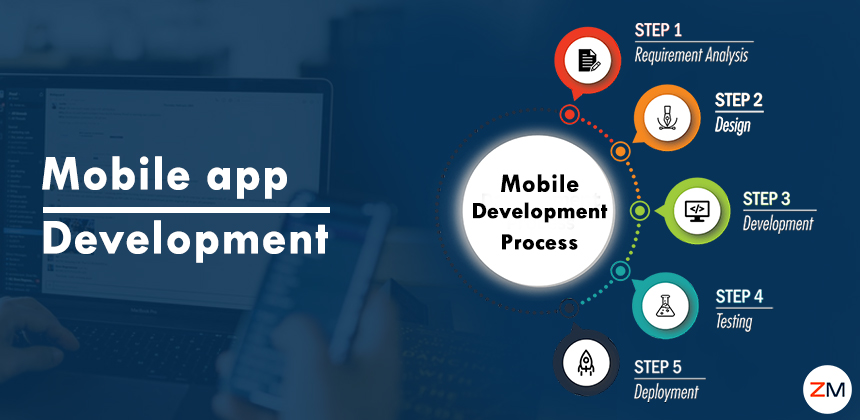Building a mobile app is easy if you understand the process. You can do it yourself, or you can hire a UX design and development firm. Today, we will tell you what resources will be needed to create a mobile application design and what you need to know before starting development, and how much a successful release costs. Let’s start!
The main purpose of every mobile app
As the Dworkz team says, a mobile application serves different purposes. It can be the main product of the business or an additional channel for attracting customers. For example, Telegram messenger is an independent service application that covers the need for users to communicate. And the Perekrestok supermarket has a different situation: their delivery application is secondary because the main product is offline retail stores. However, with any strategy, a mobile application brings benefits: it helps to grow a business and increase sales.
The old method of selling through the site is no longer working one hundred percent. First, 56% of the world’s Internet traffic is taken by mobile phone users. Secondly, many people prefer apps to classic sites in the browser. That is, part of the target audience will not go to the site for shopping because they do not use a browser. It turns out that if a business has a mobile application, it can reach more potential customers.
For some startups, creating mobile apps is inevitable because the idea can only be implemented on a smartphone. For example, a navigator or a pedometer. Such businesses can test their hypotheses and test demand only with the MVP of the application, which we will talk about later.
UI/UX mobile application design
If the whole idea of a project turns out to be in demand, it’s good. However, only a win-win idea is not enough. Everything needs to be ideally presented. This applies not only to code but also to UI/UX design elements. In the development process, it is better to keep abreast of trends and popular solutions, whether it is the location of the burger menu or global user experience issues. For example, MVPs allow you to exchange ideas, get useful feedback and develop an application by following user requests.
The user interface of mobile applications plays a very important role in the process of creating an application because the interface is the connecting link between the hardware and software of the mobile device and the focus of user interaction.
When developing a mobile application, developers should always consider how much attention is limited to the size of the screen, how to reduce the number of keystrokes, and how to fit the necessary set of functions into the application in the most compact way. Therefore, for mobile developers, the process of developing mobile applications is often not limited to just writing code for the task, mobile application development includes a wider and more creative range of activities.
Benefits of MVP
MVP provides not only opportunities for development and cooperation. This approach has other advantages:
- Costs-saving
Instead of wasting available resources on details, you leave only the key component of the product and work on it.
- Efficiency
This approach saves not only money but also time. An MVP can be created in three months. For comparison, the full and high-quality development of an application with all the functions (even the most insignificant ones) will take at least a year or two.
- Direct interaction with the audience
Detachment from users leads to poor results. But interaction, on the contrary, is always beneficial for both parties. Even if the idea seems brilliant, you need to remember that you are looking at it from the perspective of a founder. One has only to change the perspective, as a completely different understanding of things can open up.
- A solid basis for further development
If you launch an MVP and see that the project has potential. The further algorithm of actions is simple: do not go too far from the set course, expand the functionality and not lose touch with the target audience.
How to create a mobile application
There are two main ways to create mobile applications. They are custom development and using constructors. Both options have their pros and cons and are worth exploring.
It is important to note that it is not rational for a startup to immediately create a full-fledged application since the idea has not yet been tested. There is a risk of spending time and money where there is no demand. Therefore, first, they prepare the MVP of the application – the minimum viable product. It covers the needs of users and generates income for the creator, but MVP includes only basic functions. MVP is designed to quickly and inexpensively test the startup idea and demand. If everything went well, then the MVP is improved and additional features are added.
the main tasks of a mobile application developer:
- creation of T3 (technical task) for development of mobile application; discussion with the customer of stages and progress of the project;
- building application architecture;
- programming directly;
- work with designers; support for mobile applications;
- work with testers on debugging and testing applications;
- help in creating instructions for working with the finished application and documentation;
- Hosting apps in the AppStore and Google Play Market, Amazon Appstore, Opera Mobile Store, and other mobile app stores.
Wrapping it up
The mobile app is a must-have today. They account for half of all internet traffic. A mobile application can be made in the constructor or developed individually with the team. If you search for a trusted UX design and development firm, let Dworkz assist you.
As for a constructor, it is a service with a set of ready-made blocks, with which you can easily make template applications. This approach is fast and inexpensive but provides an application with minimal options.
Custom development is the creation of mobile applications under individual requirements from scratch. It is a long process with a team of developers, designers, QA specialists, and project managers but with the possibility to implement any unique idea.





Be First to Comment